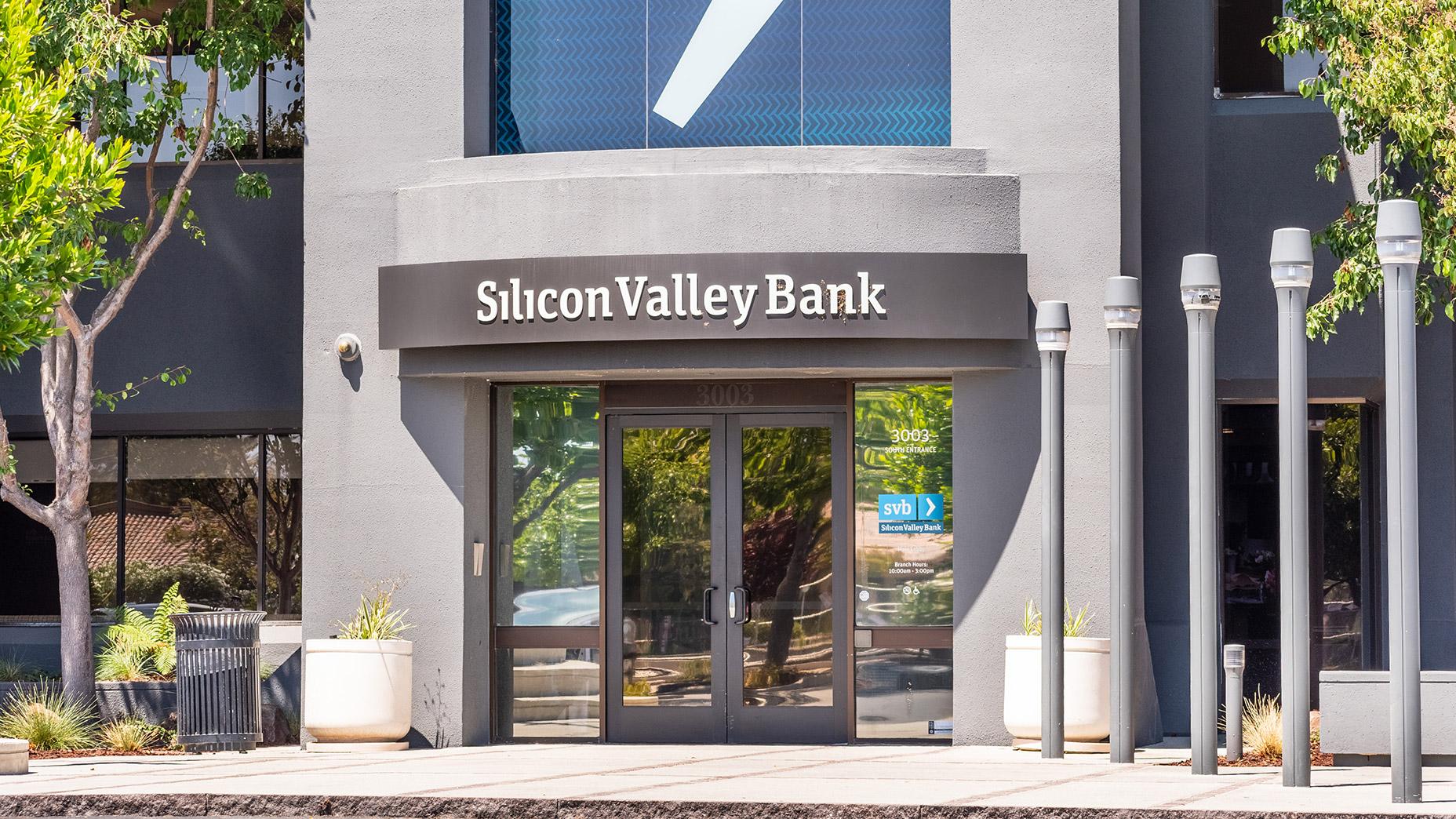What Happened to Silicon Valley Bank, and What Has the Fed to Do With It?

6 minutes for reading
The collapse of Silicon Valley Bank (SVB) triggered panic in the stock market, leading to a sell-off in the banking sector and a 5% drop in the S&P 500 (US500) stock index. The Financial Select Sector SPDR® Fund (NYSE: XLF) ETF fell 11.7% from 8 to 17 March inclusive and is still trading at its lowest level. In today’s article, we will try to answer why Silicon Valley Bank went bankrupt, and whether the Fed will change its monetary policy.
Silicon Valley Bank in brief
Silicon Valley Bank (SVB) is an American bank that specialised in serving companies in the technology and venture capital sectors. Founded in 1983 in Silicon Valley, it was part of SVB Financial Group (NASDAQ: SIVB). It was the 16th largest bank in the US with over 210 billion USD in assets.
Silicon Valley Bank has been one of the most active lenders to technology startups, providing loans for research and development, business expansion, acquisitions, and other purposes. Renowned US corporations such as Alphabet Inc. (NASDAQ: GOOG), Cisco Systems Inc. (NASDAQ: CSCO), Tesla Inc. (NASDAQ: TSLA), and Netflix Inc. (NASDAQ: NFLX) are among those that received funding from SVB. In addition, its clients included firms with high credit risk, which had difficulty obtaining financing from other institutions.
How has the Fed’s rate hike affected SVB?
In March 2022, the US Federal Reserve System (FED) began a cycle of interest rate hikes. By March 2023, the rate had risen from 0.25% to 4.75%, meaning the cost of credit had increased 19-fold. This created a situation where firms had to use their previously accumulated reserves, as it had become expensive for them to raise finance. Consequently, they began pulling out money from their accounts to finance running expenses.
Silicon Valley Bank invested part of its deposits in long-term bonds and fixed-income stocks, which are considered safe assets. The discount rate rise caused the value of the bonds to fall, with the bank incurring an uncovered loss as a result. To make it clearer: the value of 10-year US bonds has decreased by 34% from August 2020 to March 2023.
To meet customer demands for deposit repayment, the bank was forced to either sell financial instruments previously purchased at a loss or raise additional funding. Silicon Valley Bank floated bonds in 2022, thereby raising about 10 billion USD.
The Fed was expected to end its rate hike cycle in 2022, but this did not happen. In January 2023, it increased the key rate from 4.5% to 4.75% with a forecast of further monetary policy tightening. Bank customers continued to withdraw funds from their deposits, and this led to SVB announcing on 8 March that it had raised an additional 2.25 USD billion in funding with increased yields for lenders.
This decision raised strong doubts about the bank's financial strength and its ability to meet customer demands. As a result, the number of customers wishing to withdraw their deposits increased sharply, which aggravated the bank's situation. On 10 March, it was closed by the Federal Deposit Insurance Corporation (FDIC).
Who was affected by the collapse of Silicon Valley Bank?
Investors began to worry that an analogous situation was possible in other banks, which sent the stock prices across the financial sector plunging. Between 8 to 17 March 17 inclusive, Signature Bank (NASDAQ: SBNY) stock fell 33.1%, First Republic Bank (NYSE: FRC) plunged 80%, and Charles Schwab Corp. (NYSE: SCHW) plummeted 24.7%.
Shares of European banks were also sold off: Deutsche Bank AG (NYSE: DB) fell by 19.2%, UBS Group AG (NYSE: UBS) by 15.3%, and Credit Suisse Group (NYSE: CS) by 30.4%. The latter had to seek help from the Swiss central bank for help. It later became known that UBS Group AG had taken over Credit Suisse Group.
What assets have appreciated amid the banking crisis?
Any crisis leads to weak players leaving the market while strong players buy up attractive assets at low prices. For example, HSBC Holdings plc (NYSE: HSBC) bought the British division of Silicon Valley Bank for just over 1 USD.
Clients of smaller financial institutions began transferring their funds to trusted and larger players in the market, resulting in a cash inflow to JPMorgan Chase & Co. (NYSE: JPM), Citigroup Inc. (NYSE: C), Wells Fargo & Co. (NYSE: WFC), and Bank of America (NYSE: BAC). For example, according to Bloomberg, Bank of America received more than $15 billion in deposits after the collapse of Silicon Valley Bank exceeded 15 billion USD.
Since 8 March, market participants have been showing an increased interest in gold and gold mining company stock. The precious metal gained 10%, with Newmont Corporation (NYSE: NEM) adding 13.5%, and Barrick Gold Corporation (NYSE: GOLD) 14.8%.
Bitcoin cryptocurrency prices jumped 40% from 10 to 20 March inclusive. During this period, the ProShares Bitcoin Strategy ETF (NYSE: BITO), which invests in cryptocurrency, gained 41%.
What is the Fed’s next move?
The regulator is currently in a difficult position: on the one hand, it must fight inflation and follow a strategy of further monetary tightening, while on the other hand, the situation in the banking sector is already alarming and a tightening could make things much worse.
Market participants have started to build expectations of a softening of the Fed rhetoric. This is clear from the fall in US Treasury bond yields, which are directly dependent on the regulator's monetary policy. From 8 to 20 March inclusive, the yield on 10-year US Treasuries declined from 4% to 3.32%.
As mentioned above, Silicon Valley Bank's problems had a negative impact on European banks. The European Central Bank (ECB) was expected not to raise its interest rate by 0.5% as previously forecasted. Yet, on 16 March, the regulator raised the rate by 0.5% to 3.5% at its regular meeting. The monetary watchdogs apparently do not consider the problems in the banking sector to be catastrophic.
It can be assumed that the Fed will do the same this week. An indirect confirmation of this is the sharp increase in the US Central Bank’s lending to commercial banks. According to Bloomberg, since the beginning of March, banks have borrowed over 150 billion USD from the CBR. Note that during the 2008 financial crisis, the maximum lending volume in such a short period of time was 115 billion USD.
The banking crisis is not likely to develop further, and the Fed will continue to fight inflation by tightening monetary policy.
Conclusion
The US Federal Reserve is raising interest rates to slow down economic growth and fight inflation. The rise in the discount rate, the choice of investment instruments, and increased customer demand for a return on their own funds were among the main reasons for the collapse of Silicon Valley Bank.
The SVB bankruptcy has negatively affected many financial sector representatives in the US and Europe, with their stocks showing significant depreciation, and some companies founding themselves in a particularly difficult position. At the same time, gold, bitcoin, and the shares of gold mining corporations have recorded a rise in price.
However, the ECB, even in the context of the current banking sector situation, did not give up its decision last week to raise the interest rate. It can therefore be assumed that the Fed will do the same this week and continue its fight against inflation.











